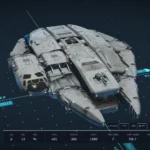Are you ready to embark on an intergalactic adventure in Starfield? Whether you’re a seasoned space explorer or a rookie astronaut, one thing’s for certain – saving your progress is crucial. In this guide, we’ll dive into the world of Starfield saving, from understanding the basics to avoiding common issues. So fasten your seatbelts and prepare for liftoff as we explore the galaxy of saving in Starfield and discover how to save on Starfield like a pro.
Understanding the Basics of Saving in Starfield
Embarking on a journey through the stars in Starfield, you’ll want to ensure that every discovery, every encounter, and every strategic decision is recorded in the annals of your personal space odyssey. The saving mechanism is your trusty companion in this endeavor, designed to be as intuitive as the cockpit of your spacecraft. Whether you find yourself amidst the tranquility of space or on the cusp of a galactic revelation, saving your game is just a few clicks away.
To immortalize your progress, simply hit pause to bring time to a standstill. Glide over to the data screen with the finesse of navigating through an asteroid field, and there, select the “system” option. With a sense of accomplishment, click on “save” to secure your place in this vast universe. It’s a small step for a gamer, but a giant leap for your gaming legacy.
| Platform | Action | Location |
|---|---|---|
| PC/Xbox | Pause game > Data screen > System > Save | In-game menu |
Avoiding Common Saving Issues
Despite the simplicity of the save function, adventurers may occasionally face cosmic anomalies that disrupt their ability to save. A starship captain must ensure that their navigational charts are free of errors; similarly, your Windows user profile and folder names must be clear of any special characters that could cause a malfunction in the saving protocol.
If you encounter an obstacle that prevents your game from recording your feats, consider a system reboot as your first line of defense. This often acts as a soft reset to the universe, smoothing out any technical space-time ripples that might impede the saving process. Should the issue persist, verify that your digital cosmos, namely your folders and files, are named with the simplicity and clarity of a star chart, unmarred by unnecessary glyphs or symbols.
Remember, the integrity of your spacefaring journey rests upon the reliability of your save system. Ensure you regularly chart your course with a save, so that no asteroid, no pirate, and no anomaly can erase the tale of your interstellar conquests.
Understanding the Autosave Feature
In the vast expanse of Starfield’s universe, the autosave function serves as a silent guardian, meticulously recording your journey’s milestones. This built-in safety net operates in the background, triggering a save at pivotal moments, particularly when you transition between the game’s diverse locations. It’s a feature designed to preserve your interstellar endeavors without requiring manual input every step of the way.
While the autosave offers a measure of security, it’s not infallible. Relying solely on it can be akin to navigating an asteroid field blindfolded. Unforeseen glitches or power outages could potentially jettison your progress into the void. That’s why complementing the autosave with manual saves is not just recommended; it’s a strategy for ensuring the continuity of your cosmic odyssey.
Understanding the intricacies of the autosave feature is akin to mastering the controls of your spacecraft. It’s about knowing when the game will likely initiate an autosave and planning your manual saves accordingly. For instance, before embarking on a high-stakes mission or after acquiring a coveted piece of technology, it’s prudent to manually save. This way, you create a stable warp point to return to, should the tides of fate turn against you.
Remember, the autosave slots are limited, and the game will overwrite the oldest file with the newest content. It’s a cycle of renewal that keeps the narrative moving forward but also means that, without manual intervention, you might lose a treasured save. To avoid this, regularly cycle through your manual saves, creating a tapestry of fallback points that chart your progress through the stars.
The value of the autosave cannot be overstated, but it’s your manual saves that truly map the constellation of your journey. Together, they form a comprehensive save system that safeguards your story against the unpredictable black holes of gaming mishaps.
Saving and Exiting Starfield
Embarking on the celestial journey of Starfield can be a marathon of space exploration, fraught with countless discoveries and challenges. When the time comes to dock your virtual spacecraft and take a well-deserved break, securing your progress is a step you cannot afford to overlook. To save and exit Starfield, the method mirrors the familiar routine of preserving your journey’s milestones.
Pause your interstellar endeavors by accessing the Data Menu, and navigate to the System option. Here lies the command deck for saving your game; you can choose to quicksave for a swift snapshot of your current state or opt for a full save to carefully archive your progress. A quicksave is a convenient feature, but be aware that it will overwrite any previous quicksaves, leaving you with only the most recent checkpoint. A full save, however, allows you to create a unique save file, which can be a lifeline if you wish to revisit earlier phases of your adventure.
Once you’ve secured your latest achievements and are ready to exit the game, you can do so with the peace of mind that your intergalactic exploits are safely stored, waiting to be resumed at your next log-in. If you find yourself in need of assistance or seeking more detailed instructions on the save system, the Bethesda help center is your go-to resource for all things Starfield. Armed with this knowledge, you can confidently take a respite from your cosmic quests, knowing that upon your return, the stars will be right where you left them.
Given the intricate nature of Starfield‘s vast universe, it’s essential to remember that while the game will protect your progress with its autosave function, these automated checkpoints might not always align with your personal milestones. It’s vital to complement the autosaves with manual saves, especially before you suspend your session. This habit ensures that your hard-earned progress is not left to chance and that every thrilling exploit and hard-won battle is chronicled in your personal space odyssey.
As you gear up for your next foray into the unknown, bear in mind the significance of the saving protocol. It’s the lifeline that connects each leap across the cosmos, making it not just a routine step, but a crucial element in the grand tapestry of your Starfield saga.
FAQ
Q: How do I save in Starfield?
A: To save in Starfield, pause the game and go to the data screen. From there, navigate to the system option and choose save.
Q: Does Starfield automatically save?
A: Yes, Starfield creates several autosaves of your progress by default. These autosaves usually occur when changing locations in the game.
Q: How do I save in Starfield on Xbox?
A: The process of saving in Starfield on Xbox is the same as on other platforms. Pause the game, go to the data screen, select system, and then choose save.
Q: How do you open the save menu in Starfield?
A: To open the save menu in Starfield, open the Data Menu and press System. From there, you can either quicksave or save the game. When quicksaving, it will overwrite the previous quicksave, but a new save point will be created.







